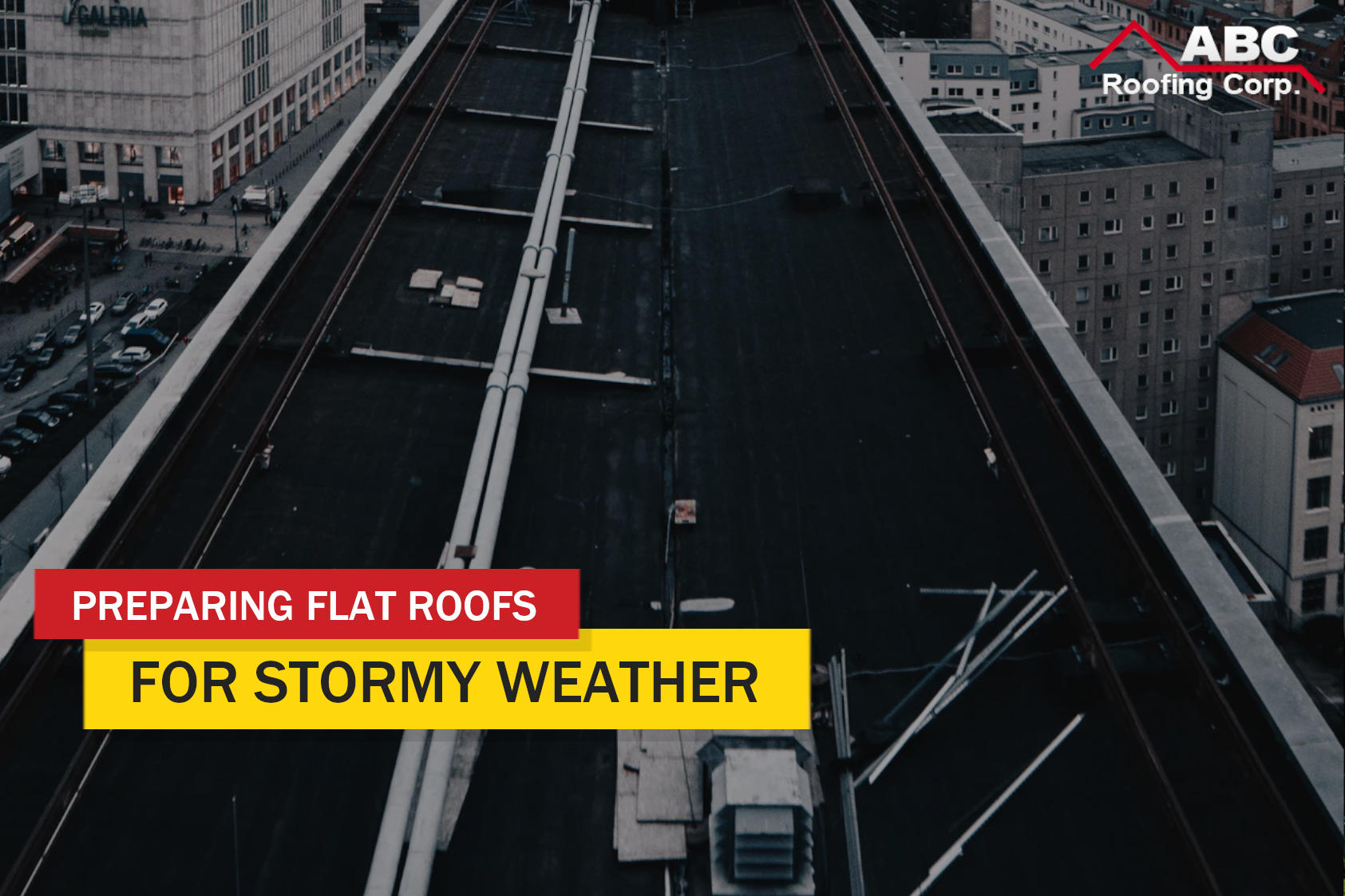
Don’t make the mistake of assuming your flat roof needs less preparation before the stormy season than a sloped roof. There is much that can go wrong with commercial and flat roofs as well.
The first thing to come to mind for many is that a sloped roof is higher risk as it can blow right off in a storm if it’s not secure. However, the truth is that flat roof damage can be as extensive and expensive as sloped roof damage.
Flat Roofs and Storm Winds
The kind of high winds that tear roofs off are only one aspect of a storm. Flat roofs are still vulnerable to these winds because the roof, just like sloped roofs, are still secured in layers at various points and joints. Some coatings can make your roof less vulnerable, but the joints and edges must still get regular maintenance and pre-hurricane season checks.
Flat Roofs and Storm Water
As we’ve said, winds are only one aspect of a storm.
Sometimes we think that if our roofs are “wind proof,” they will also be waterproof. This is like assuming water only gets in after wind damage happens. However, before we even talk about water getting in we should look at what happens to it when it doesn’t. Seeing as it’s not running off if you’ve got a flat roof, your drainage and waterproofing need to be seriously intact.
It’s important to remember that a lot of wear and tear happens over a short time when water ponds on a flat roof. Along with checking your joints, check your membranes and do a thorough drainage system clean-out as well.
Flat Roofs and Storm Consequences
If flat roofs have not been maintained or checked sometime relatively recent before stormy weather arrives, there could be leaks and weak areas that let water in without wind damage. In that case, especially with pooling, flat roofs are in some ways more vulnerable than sloped roofs.
Have you ever seen the extent of water damage on a roof that collapses rather than having a section blow off? It’s bad, like writing-off your house. Take the time to look into the best sealant for the flat roof you have. You don’t want to be heading to your insurance company after assuming your flat roof survives storms better than other roofs, hoping for some coverage. Oh, and while we’re on the subject, always know what your insurance covers and what level of maintenance they expect to be happening.
Flat Roofs and Storm Hazards
Aside from the material condition, your flat roof can fall victim to a number of other factors.
If you have skylights, especially aging ones, part of preparing your roof would be to cover these. Any loose extras like HVAC systems should also be additionally secured because these come loose easily in a storm. Once they do, they are flung around causing damage all over the roof and potentially to neighboring structures.
Anything hanging over the roof like trees or shading also need to be trimmed or moved so that they are not in a position to land on your roof during a storm.
Simplifying Your Flat Roof Storm Prep…
Preparing for storms starts to feel like a huge task once you realize how much you have to do beforehand. Luckily, we have some awesome tried, tested and ready-to-go simple solutions for flat roofs.
Storm damage shouldn’t take you by surprise no matter what type of roof you have on your home or commercial structure. And yes, flat roofs may be easier to maintain, but not because you don’t need to prepare them. Rather, because there are easy solutions that make maintenance more standard. The 2020 hurricane season is set to be a high risk for your flat roof, with a lot of activity predicted. Call us at 954-344-4622 to make sure your flat roof is ready to weather any storm this rainy season.
